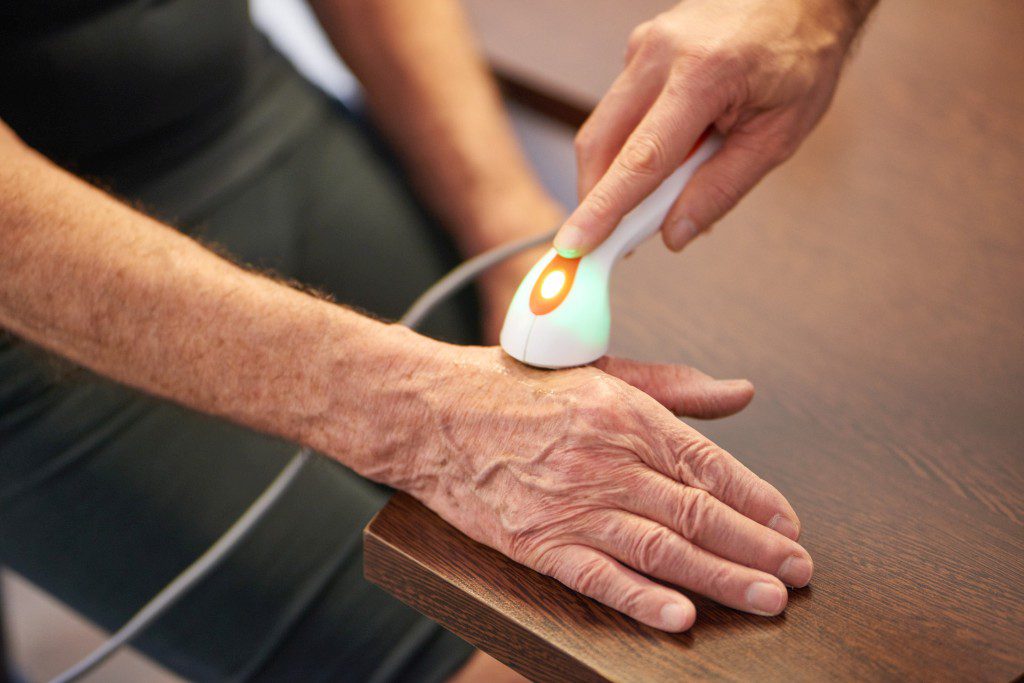Electrotherapy is the therapeutic use of electric currents to help stimulate nerves and muscles. This stimulation results in muscle contractions which are induced by electrodes that are glued to the skin. Electrotherapy is often used to treat pain, discomfort, and to strengthen weak muscles. Depending on the severity of a patient’s condition, the applied electrical currents may vary between low, medium, or high frequency. This therapy is typically prescribed as part of a larger treatment regimen.

The electrodes are placed near the affected areas, but the treatment itself is not painful. Patients describe the feeling to be a gentle tingling sensation on their skin. In some situations, rather than applying the current directly to the affected area, the electrodes are placed on the spine to stimulate the corresponding nerve ending. These areas are stimulated with high frequencies and low currents, which results in counter-stimulation, a technique proven to treat pain and strengthen muscles.
The Principle of Counter-stimulation
As in acupuncture, the main principle of electrotherapy is called counter-stimulation. Using this approach reduces pain and discomfort with the help of electrical currents, vibrations, and touch. Chronic conditions that can be improved with electrotherapy include muscle rheumatism, neuralgias such as sciatica, osteoarthritis, and even some forms of paralysis. Electrotherapy is also an effective treatment for muscle weaknesses and lack of muscle feeling, lack of blood circulation due to circulatory disorders, bone diseases as a result of damage, and arterial occlusive diseases. Additional applications include phlebitis, decubitus ulcers, delayed wound healing, osteoporosis and delayed bone healing.
The following benefits can result from the diverse methods of utilizing electrotherapy:
- Pain relief
- Circulation stimulation
- Stimulation of lymphatic reflux
- Tonus regulation of the musculature
- Stimulation of damaged nerves
- Prevention of muscle loss after surgery
- Introduction of medications with the aid of iontophoresis or phonophoresis


